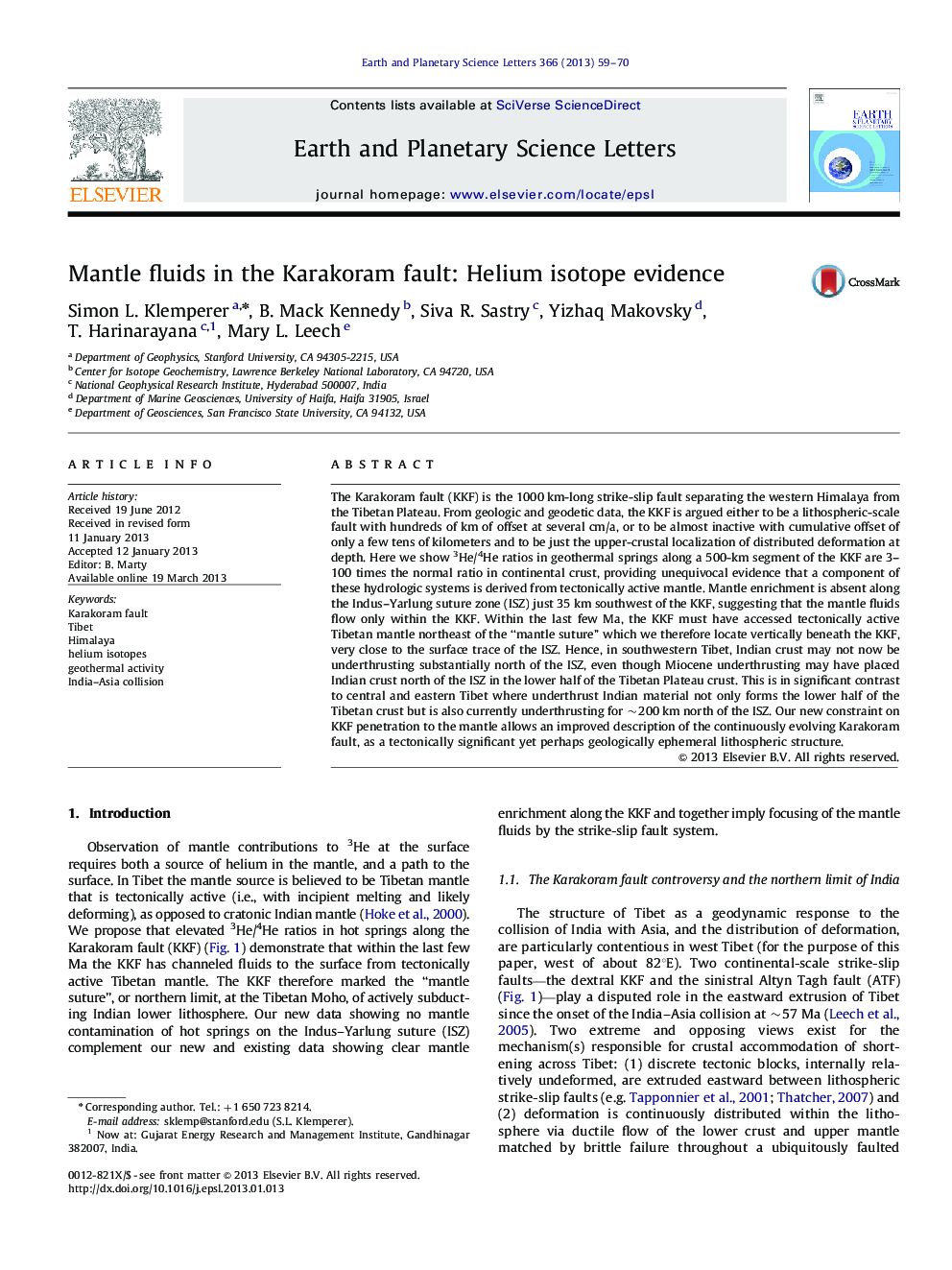| کد مقاله | کد نشریه | سال انتشار | مقاله انگلیسی | نسخه تمام متن |
|---|---|---|---|---|
| 6430356 | 1634787 | 2013 | 12 صفحه PDF | دانلود رایگان |
The Karakoram fault (KKF) is the 1000Â km-long strike-slip fault separating the western Himalaya from the Tibetan Plateau. From geologic and geodetic data, the KKF is argued either to be a lithospheric-scale fault with hundreds of km of offset at several cm/a, or to be almost inactive with cumulative offset of only a few tens of kilometers and to be just the upper-crustal localization of distributed deformation at depth. Here we show 3He/4He ratios in geothermal springs along a 500-km segment of the KKF are 3-100 times the normal ratio in continental crust, providing unequivocal evidence that a component of these hydrologic systems is derived from tectonically active mantle. Mantle enrichment is absent along the Indus-Yarlung suture zone (ISZ) just 35Â km southwest of the KKF, suggesting that the mantle fluids flow only within the KKF. Within the last few Ma, the KKF must have accessed tectonically active Tibetan mantle northeast of the “mantle suture” which we therefore locate vertically beneath the KKF, very close to the surface trace of the ISZ. Hence, in southwestern Tibet, Indian crust may not now be underthrusting substantially north of the ISZ, even though Miocene underthrusting may have placed Indian crust north of the ISZ in the lower half of the Tibetan Plateau crust. This is in significant contrast to central and eastern Tibet where underthrust Indian material not only forms the lower half of the Tibetan crust but is also currently underthrusting for â¼200Â km north of the ISZ. Our new constraint on KKF penetration to the mantle allows an improved description of the continuously evolving Karakoram fault, as a tectonically significant yet perhaps geologically ephemeral lithospheric structure.
323Highlights⺠Mantle 3He occurs in hot springs for >500 km along the Karakoram fault (KKF). ⺠Modeled vertical transport rates imply â¥3.5 Ma ascent time from the mantle up the KKF. ⺠The KKF accessed tectonically active (Tibetan) mantle at least into Pliocene time. ⺠Where the KKF accesses Tibetan mantle, it limits northward underthrusting of India. ⺠No “mantle helium” signature is seen associated with the Indus-Yarlung Suture Zone.
Journal: Earth and Planetary Science Letters - Volume 366, 15 March 2013, Pages 59-70
